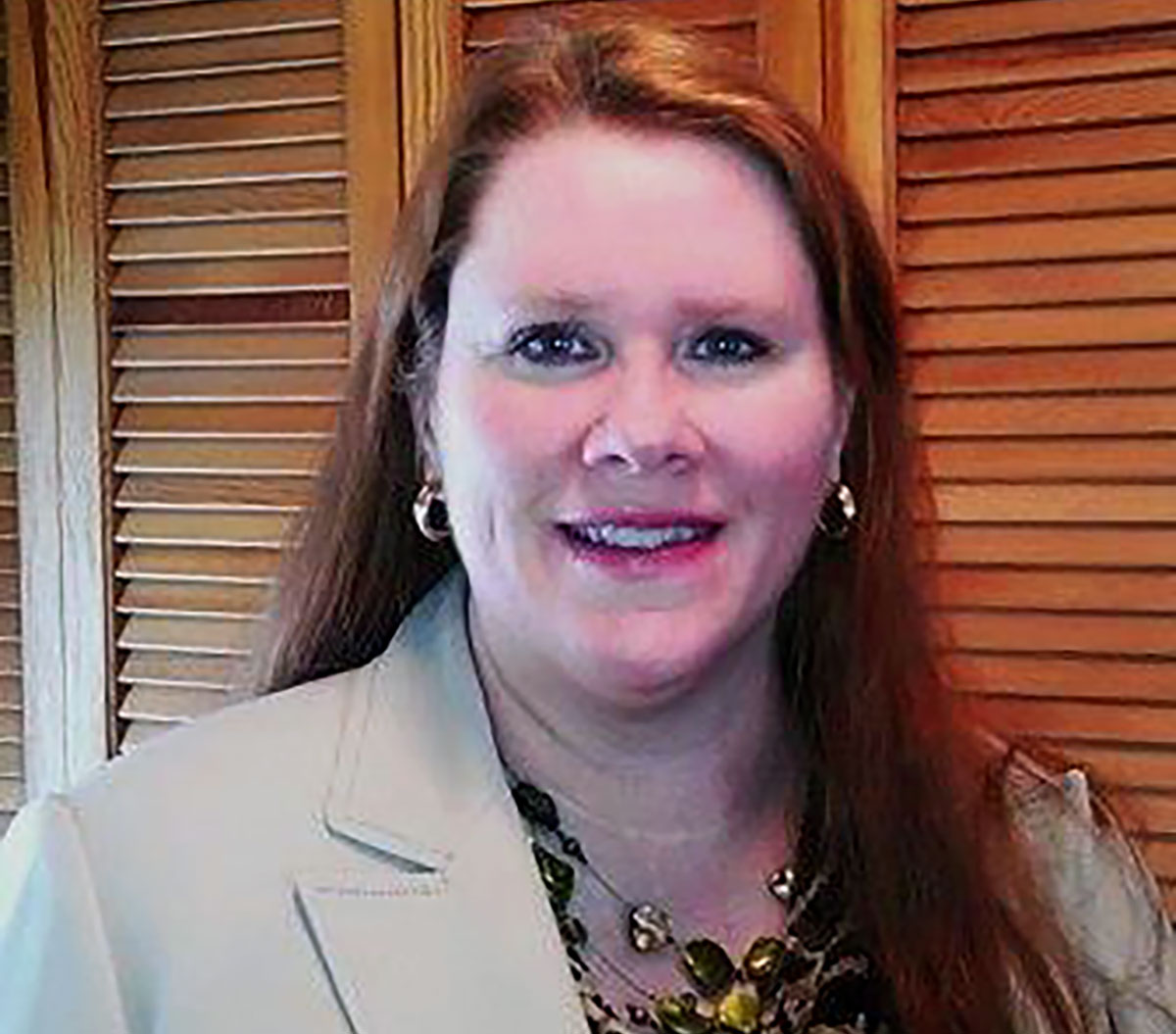
One day in March 2017, a Wausau man grabbed a pistol and killed two of his wife’s coworkers, a police detective, and Sara Quirt Sann, his wife’s divorce attorney.
Marathon County still bears the scars from that awful day.
“It had a huge impact on this community,” said Rhonda Werner Schultz, a colleague of Sann’s. “You can’t throw a stone without seeing Sara’s name somewhere, along with the names of the other three people who were killed.”
Sann, who had a passion for yoga and helping people, was 43 years old. Her murder hit the local legal community like a thunderbolt.
“Nobody could believe that of all the people in the world, Sara would be the person killed in this,” Werner Schutlz said.
Deadly Pattern
Sann’s murder is part of a pattern of violence against attorneys, judges, and other members of the legal system.
 Jeff M. Brown, Willamette Univ. School of Law 1997, is a legal writer for the State Bar of Wisconsin, Madison. He can be reached by email or by phone at (608) 250-6126.
Jeff M. Brown, Willamette Univ. School of Law 1997, is a legal writer for the State Bar of Wisconsin, Madison. He can be reached by email or by phone at (608) 250-6126.
When a rifle-toting hitman murdered U.S. District Court Judge John H. Wood Jr. in San Antonio in 1979, it was the first time a federal judge had been killed in office since 1867.
In the 44 years since Wood’s murder, however, three sitting federal judges have been murdered.
And in 2020, a man bent on killing Esther Salas, a judge on the U.S. District Court for the District of New Jersey, came to the front door of her house, gunned down her son, and critically wounded her husband.
The trend has claimed state court judges too.
In June 2022, in Wisconsin, retired Juneau County Circuit Court Judge John Roemer was shot and killed inside his own home by a man he’d sentenced to prison 17 years earlier.
And earlier this year, a Maryland circuit court judge was shot and killed by a man upset that the judge had ruled against him in a child custody dispute.
An Underreported Threat
The threat to legal professionals is evident in 30 studies conducted by Stephen Kelson, a shareholder at Christensen & Jensen PC in Salt Lake City, Utah.
Kelson is one of 10 contributors to Reduce Your Risk: A Guide to Personal Safety and Security for the Legal Community, a recent publication by State Bar of Wisconsin PINNACLE®.
Reduce Your Risk was written to help lawyers, judges, and other legal professionals recognize the potential for violence against them and take steps to prevent it.
In his chapter, Kelson details how his surveys, conducted between 2005 and 2020, demonstrate the danger that legal professionals face from clients and opposing parties.
“The results of these surveys show that violence and threats of violence against members of the legal profession are far more prevalent than reported by the media or commonly perceived by lawyers,” Kelson wrote.

“It had a huge impact on this community,” said Rhonda Werner Schultz, speaking about the murder in 2017 of colleague Sara Quirt Sann, a Wausau family law practitioner. “You can’t throw a stone without seeing Sara’s name somewhere, along with the names of the other three people who were killed.” Sann’s murder is part of a pattern of violence against attorneys, judges, and other members of the legal system.
‘People in Crisis’
Kelson, who maintains a litigation and mediation practice, became interested in studying threats against legal professionals while in law school.
“I looked into it and there was no paper on it,” Kelson said. “I wrote a paper on it, and it ended up getting published in the Journal of the Legal Profession.”
Kelson said legal professionals are increasingly prey to lethal violence in part because of the conflict inherent in the legal system.
“Attorneys are dealing with people in crisis,” Kelson said. “And the people in crisis, by the time they’ve come to attorneys, it’s already often reached a peak, and it’s often involving three tough areas: life, liberty, and property.”
The bundles of rights wrapped up in “life, liberty, and property” is one reason why family law and criminal law practitioners are often the subjects of threats or violence.
“Everything involved in the divorce directly affects someone’s life,” Kelson said. “There’s the division of property, who owns what and who has a right to what. Those are very touchy subjects for Americans, and people get very upset about them.”
And liberty encompasses not only incarceration, but child visitation or the termination of parental rights – “who they can and cannot see,” as Kelson puts it.
Kelson said the “spillover effect” often spurs people to threats or violence against legal professionals.
“For instance, someone has stopped them from abusing the other person,” Kelson said. “So, they look to abuse the next person that’s available, and often it ends up being the judge or one of the attorneys.”
Cognitive bias, which translates into an inability to accept blame, also often plays a role, Kelson said.
“We look for someone else to blame when something goes wrong,” Kelson said.
‘Start Paying Attention’
What’s the first step in protecting yourself from potential violence?
“Start paying attention,” Kelson said.
For instance, Kelson suggested, if you’re worried about a threat or potential violence, vary the route you take to and from the office or the courthouse.
“We’re all creatures of habit,” Kelson said. “But those habits can be detrimental to us, especially if there’s a real threat out there.”
One thing that jumped out at Kelson from his survey results was how many attorneys, once they paid attention, realized they were being followed when leaving the office.
“The goal isn’t to get people to go out and buy guns, but to be mindful of yourself and what you’re doing,” Kelson said.
Boning up on conflict resolution skills is also valuable, Kelson said. But for litigators steeped in the adversarial tradition of Anglo-American law, that can seem counterintuitive.
“There are ways to deescalate these kinds of things,” Kelson said. “But some attorneys, when some opposing person gets up in their face, instead of trying to deescalate it, they start yelling and they make it even worse. The other person just gets angrier and then you’re the enemy.”

“The results of these surveys
show that violence and threats
of violence against members of
the legal profession are far more
prevalent than reported by the
media or commonly perceived
by lawyers,” Stephen Kelson writes. Kelson, a shareholder at Christensen & Jensen PC in Salt
Lake City, Utah, has conducted 30
studies between 2005 and 2020
on the threat of violence to legal
professionals.
No Good Deed …
It’s not just losing parties who pose a danger, Kelson said.
He cited a case in which a personal injury client won a lawsuit but the client – more than one year later – returned to fire-bomb the attorney’s office.
“The person drove a vehicle loaded with barrels of gasoline into the office,” Kelson said. “They won but they felt they didn’t get enough.”
Kelson said affect labeling also offers a way out of a confrontation.
“You’re directly identifying the emotions that the person’s having,” Kelson said. “You don’t make outrageous promises when you’re threatened, but you’re hearing the person and identifying the emotion to calm them down.”
For instance, Kelson said, after hearing out an angry person, you could say, “You’re angry, please have a seat.”
“In the meantime, you’re working your way toward finding a way out of the situation,” Kelson said. “Violence is a last resort, but you’ve got to do whatever you can do to protect yourself.”
A judge in Utah recently used the technique when he was confronted in his office one night by a man who was a party to a termination-of-parental-rights proceeding.
“Somehow he had gotten in with the cleaning crew,” Kelson said. “He was upset and angry because his rights had been taken away that day. The judge talked him down.”
‘I Don’t Ever Open My Blinds’
In the wake of Sann’s murder in 2017, Werner Schultz took many of the steps outlined in Reduce Your Risk.
“I have a doorbell, people have to buzz to get in,” Werner Schultz said. “I have a camera that shows who’s out in the entryway. I used to have a glass front door; I now have an opaque front door. I don’t ever open my blinds so that people can see in because I’m on the first floor facing a parking lot.”
Werner Schultz, who practices family law, said she’s never been threatened by a client. But, she said, she’s acutely aware of the risk her practice entails.
One time, when Werner Schultz was presiding over a mediation, a man jumped up from the table and threw a can of soda at the wall over his wife’s shoulder.
“I immediately jumped in his face and told him we were calling the police, and he left,” Werner Schultz said. “You just don’t know when the person on the other side might do something.”
That concern has changed the way employees in Werner Schultz’s office handle unannounced visitors.
“I’ve told my staff to look at who’s at the door, and if it’s a known opposing party, they’re not coming in without an appointment or some prior notification,” Werner Schultz said.
Danger Spans Practice Areas
When she was a law student, Werner Schultz swore she’d never do family law. But her experience volunteering in a rape crisis center in Minnesota changed her mind.
“The women were telling me these stories about getting divorced and how their lawyers just didn’t get what they were going through, and they didn’t want to hear the emotional part about why this person might be a hot mess going into the divorce if there was some sort of sexual abuse going on, so I just decided there was a huge need and skill,” Werner Schultz said.
But the threat of violence against legal professionals spans practice areas, Werner Schultz said.
“I do some estate planning too, and sometimes you get a really upset family member in estate planning,” Werner Schultz said. “So, I don’t think you can just limit it to criminal law and family law. We don’t always know human nature, and it seems that people are getting more and more volatile.”
‘This Stuff Shouldn’t Be Happening’
Adding the security system to her office was easy, Werner Schultz said.
“I found a system on Amazon, had my electrician install it … it was not a huge expense.”
The added security measures haven’t meant a big change in the way Werner Schultz does business.
“It’s just added a layer of safety,” Werner Schultz said. “It’s not hugely inconvenient for people to push a button.”
According to Kelson, one big barrier to boosting security for legal professionals is the professionals’ mindset.
In his chapter in Reduce Your Risk, Kelson writes that many legal professionals don’t talk about threats or violence against them because they don’t want others to think they can’t handle it, or they fear that other people will think they did something wrong and deserved to be threatened or harmed.
Werner Schultz said that mindset needs to change.
“This stuff can’t happen, and it shouldn’t be happening,” Werner Schultz said.
Reduce Your Risk: A Guide to Personal Safety and Security for the Legal Community

Legal disputes are inherently adversarial, involving high stakes and provoking strong emotions. For those in the legal profession, having threats and violent behavior directed at you, your staff, and your family can come with the territory. Reduce Your Risk: A Guide to Personal Safety and Security for the Legal Community is designed to help lawyers, judges, and others in the legal community better recognize the potential for violence and implement measures to prevent it.
Reduce Your Risk empowers you to:
Make informed decisions to minimize your risk at the office and courthouse, at home, while traveling, and online
Create an actionable safety plan based on real-world scenarios and expert recommendations
Understand how safety and your ethical obligations go hand in hand
Incorporate well-being strategies that contribute to your sense of security and safety
Adopt proactive measures to help keep yourself, your staff, and your loved ones out of harm’s way with the guidance you’ll find in Reduce Your Risk: A Guide to Personal Safety and Security for the Legal Community.
AK0441: $29.99 Member | $29.99 Nonmember
» Cite this article: 97 Wis. Law. 35-38 (January 2024).
